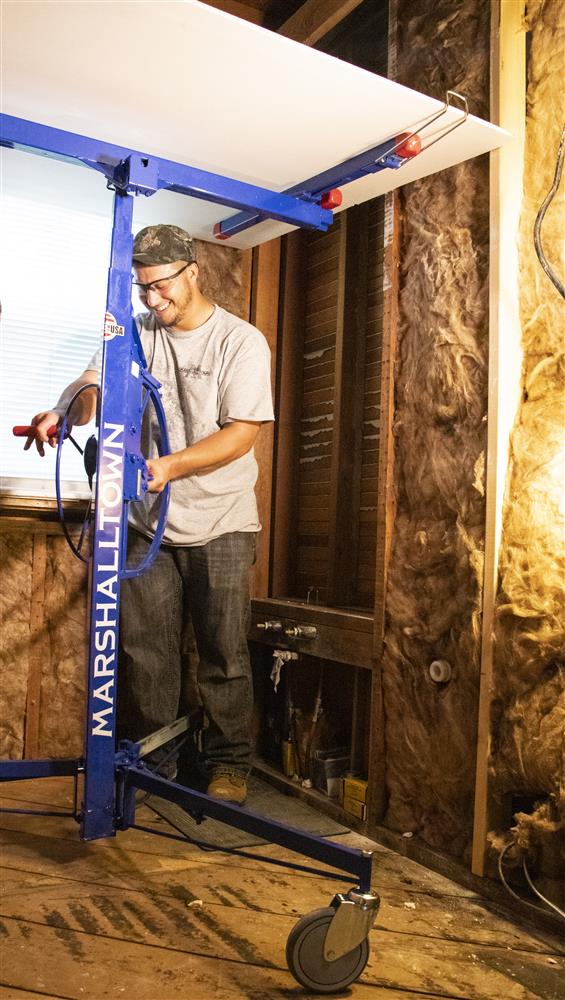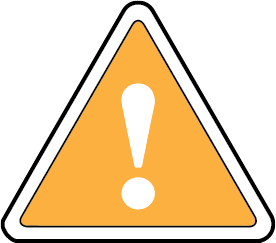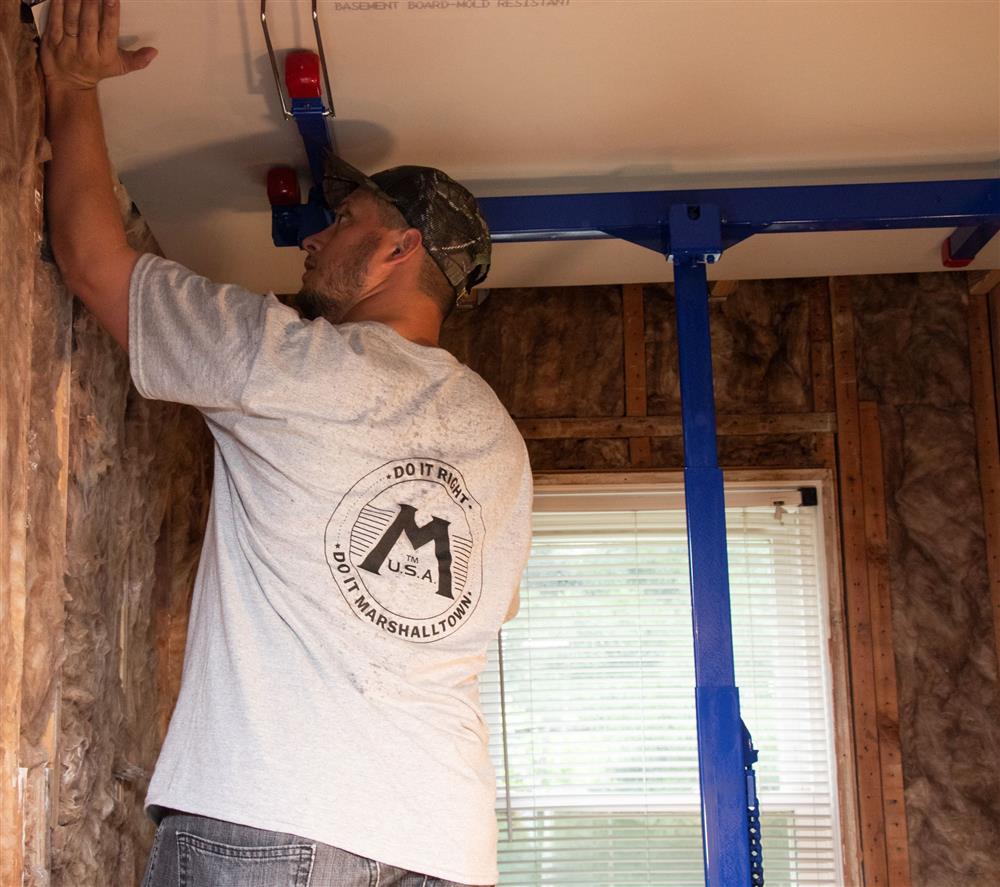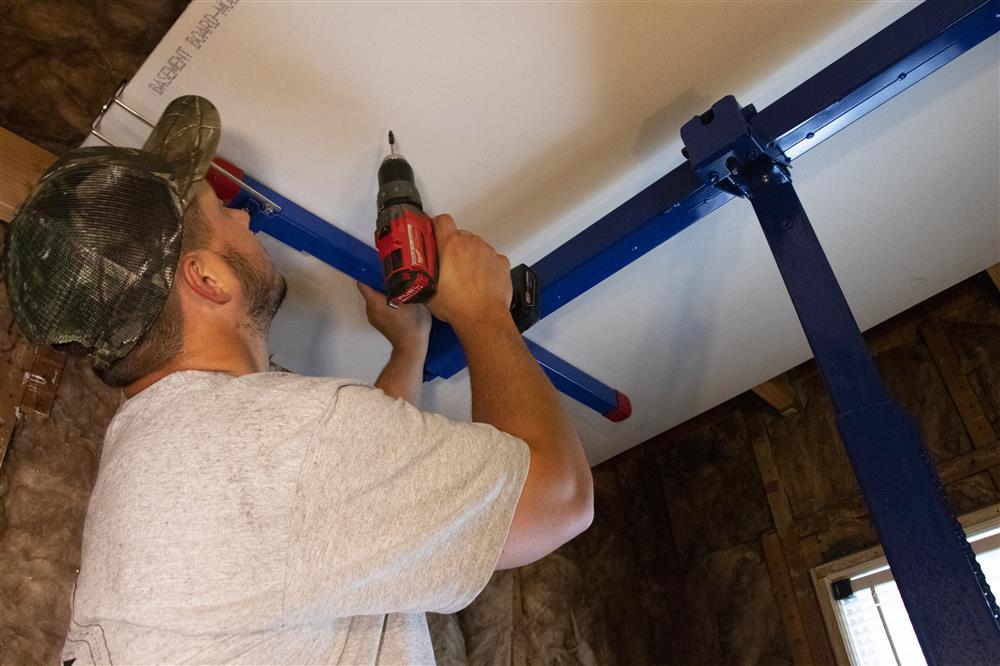If you’ve ever tried to install drywall on ceilings, you know just how difficult it can be without help. Thankfully, there is a piece of construction equipment you can use to install drywall on ceilings and walls quickly, safely, and all on your own. This impressive piece of equipment is the MARSHALLTOWN Drywall Panel Lift. It is designed to hold 4’ x 8’, 12’, and even 16’ sheets of drywall securely in place during fastening. Traditionally, it would take at least two people to install drywall on ceilings, but now, you can do this task on your own without the risk of muscle strain or injury.
MARSHALLTOWN 14.5’ Drywall Panel Lift (Chain Driven)
Three basic parts make this possible:
- Wheeled base – lockable caster wheels make it easy to roll a drywall sheet around the jobsite so you can have it perfectly lined up to fasten in place
- Winch – cranking mechanism lifts and lowers drywall as needed
- Adjustable support cradle – tilts laterally to install various sizes of drywall sheets
Most models are lightweight and portable, making them easy to fold up and load into a van or truck. The heavier models might come with support cradles with a greater range of motion.
How to Use a Drywall Panel Lift
Step 1: Load the Lift
If you are moving long sheets of drywall, especially those over 8’, it is important to understand how to properly lift and transport the sheet to avoid injury.
Here’s a quick guide to learn how to safely lift and transport drywall alone:
1. Panel should be horizontal on the ground, not vertical.
2. Stand at one end and grip the side edge (about 4” – 6” down from the corner).
3. Pick that end up and quickly get that same hand underneath the drywall sheet (Remember – momentum is your friend); use your other hand to anchor along the top edge.
4. Center yourself, then walk.
5. Place the drywall sheet in the hooks of the Drywall Panel Lift. The brown paper side should always face the wall while the sheetrock side faces the Drywall Panel Lift.
Do your best to center the drywall sheet on the hooks to keep the machine balanced.
Step 2: Tilt and Roll
After you’ve loaded the Drywall Panel Lift, carefully guide the sheet down until it is level or parallel to the ground. Then, roll in into position. It’s okay if you’re a little off now. We’ll fine-tune the position later.


Skip this step if you’re installing drywall on upper walls. Leave the lift tilted laterally (hooks pointed toward the floor) and roll the lift until the drywall sheet butts up against the wall. Gently guide the top of the sheet forward until it falls flush against the studs. Continue to Step 3.
Step 3: Winch Drywall Panel Toward Ceiling
With your left hand, pull the hand brake toward you to release the handwheel. Keep your left hand on the brake while using your right hand to crank the drywall into position, flush with the ceiling. Once your hand is securely on the crank, let go of the hand brake to automatically re-engage the hand crank.


Be sure to have your hand securely on the crank before releasing the brake!

Follow the same method described above to winch drywall sheets up the wall.
Step 4: Adjust Drywall Sheet
It is common for the drywall sheet to shift slightly while you’re winching it up into the air, but it’s an easy fix. Gently nudge or pull the sheet where you need it to be. Use a sturdy step ladder as an aid. You may need to adjust the height of the Lift if the drywall sheet is too tight against the ceiling to be moved.


You can use this same method to adjust the position of the drywall sheet against the wall.
Step 5: Secure Drywall to Studs
As the Drywall Panel Lift holds the drywall in place, secure the drywall to the studs as you normally would. Then repeat steps 1 – 5 until you’ve completed your installation.


Do not disengage the hooks when using a Drywall Lift to install drywall on upper walls. Disengaging the hooks will cause the drywall to slip out of the machine and crash to the floor, which can lead to injury or damaged drywall.
Drywall Panel Lifts make drywalling by yourself easier and safer than ever before. Save yourself from potential aches, pains, or damaged drywall by investing in this must-have drywall tool.
Check out our full line of drywalling tools on Marshalltown.com.
